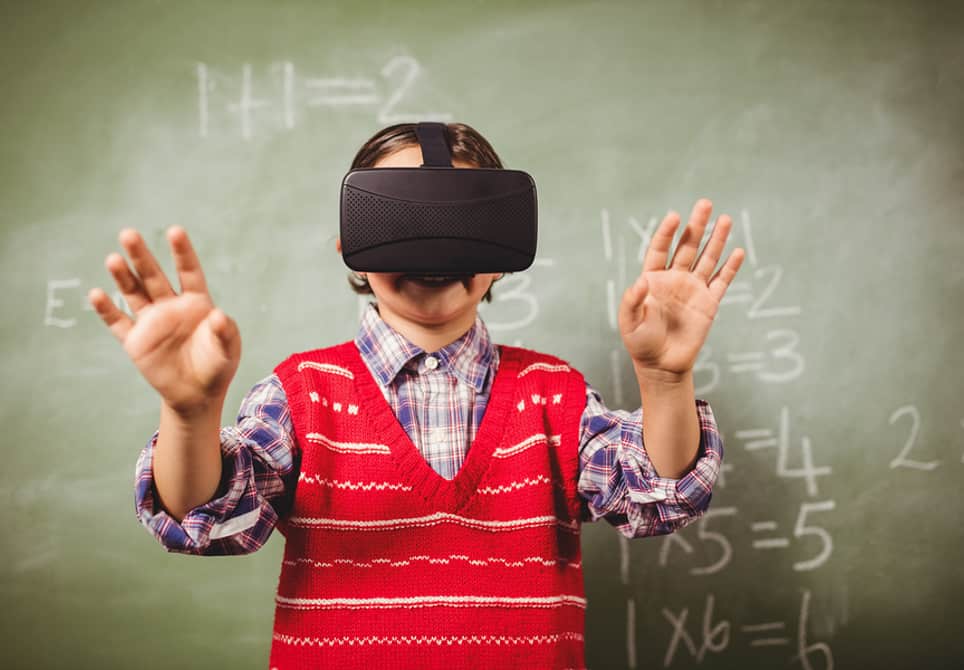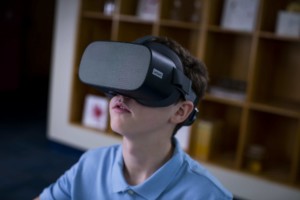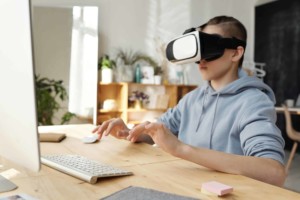Virtual Reality – Hope or Hype?

It’s true–if the Getting Smart team could travel back in time, we’d probably revise our predictions for 2016 and bump Virtual Reality (VR) up from the “honorable mention” list to the top 10. And that’s because we’re only halfway through 2016 and VR is everywhere!
TechCrunch has a pretty active VR tag, where you can discover things like the fact that the Sacramento Kings unveiled their new jerseys in VR, and another Augmented Reality (AR) startup has raised millions to give users the ability to manipulate virtual elements.
But when we say VR is everywhere, we don’t just mean tech blogs. Heck, even Huffington Post is covering VR. And have you tried out USA Today’s VR Stories news?!
There’s no doubt about it; VR and AR are pretty groovy. But what gets us really excited is the potential for VR in education. A recent EducationNext article from our friend Michael Horn does a great job of exploring whether or not we should believe the hype. Pointing to a slew of companies and investments from startups to Facebook and Google, Horn predicts:
“Further disruption appears imminent: Raw materials and designs are for sale to enable users to create their own inexpensive viewers. And affordable copycat cardboard and plastic viewers are also on the market. The higher-end Rift is mainly associated with immersive gaming for now, despite rumors that the company may consider giving Rift viewers to schools for free.”
But like so many education innovations that have come before it, just putting the tools in the hands of teachers will not be enough. Training is essential. Horn explains:
“A critical question is whether teachers are ready and able to incorporate virtual-reality lessons into their daily routines. One of Nearpod’s founders, Felipe Sommer, recently told EdSurge that he believes that the key steps will be to provide professional development and equip teachers to create their own content. For now, Nearpod is creating model lessons to get teachers started.”
And although not everyone believes that VR will automatically inspire empathy, we’re optimistic about the possibility. Horn describes how this has potential impact for students and professional learning:
“For empathy and diversity training, teachers could be prepared to better understand the situations from which their students come, and students could experience life as a member of another culture, race, or gender, for example. Students with certain phobias could work on overcoming them through encounters in virtual reality. And with a growing emphasis on workforce training, students could be ‘placed’ in real situations where they experience what the workplace might be like, from emergency-room settings to rescue situations for firefighters. Sports teams could also use virtual reality to place student-athletes in particular game situations to prepare for uncommon but critical circumstances.”
For Michael’s full article, check out Virtual Reality Disruption online and in the Fall 2016 issue of EducationNext. We’d also love to hear your thoughts on VR and AR in education, so leave us a comment or tweet us at @getting_smart.
For more from Getting Smart on VR and AR, check out:
- Virtual Reality is Coming to a Classroom Near You
- How Augmented Reality Can Change Teaching
- Augmented Reality: The Future of EdTech
Stay in-the-know with all things EdTech and innovations in learning by signing up to receive the weekly Smart Update.







0 Comments
Leave a Comment
Your email address will not be published. All fields are required.